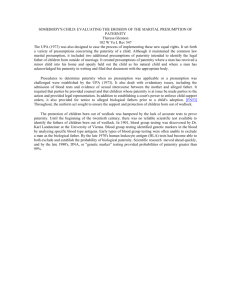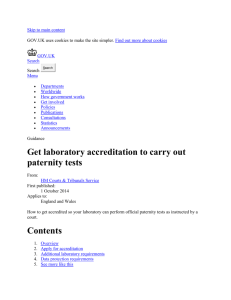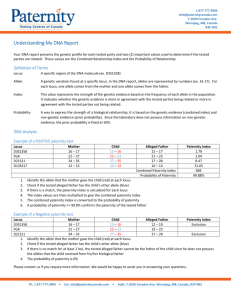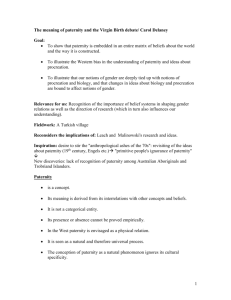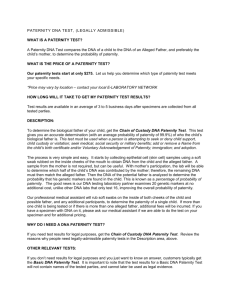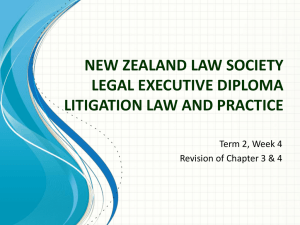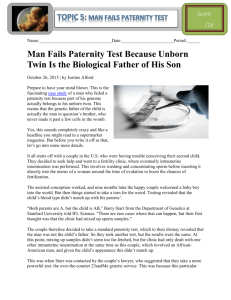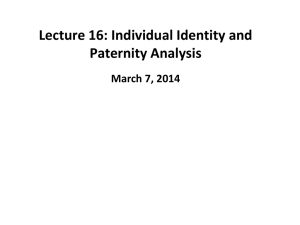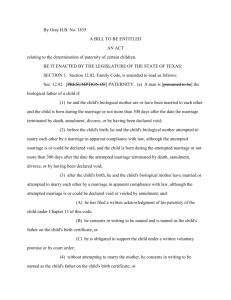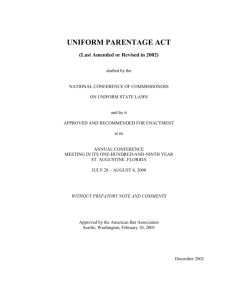Paternity 101
advertisement
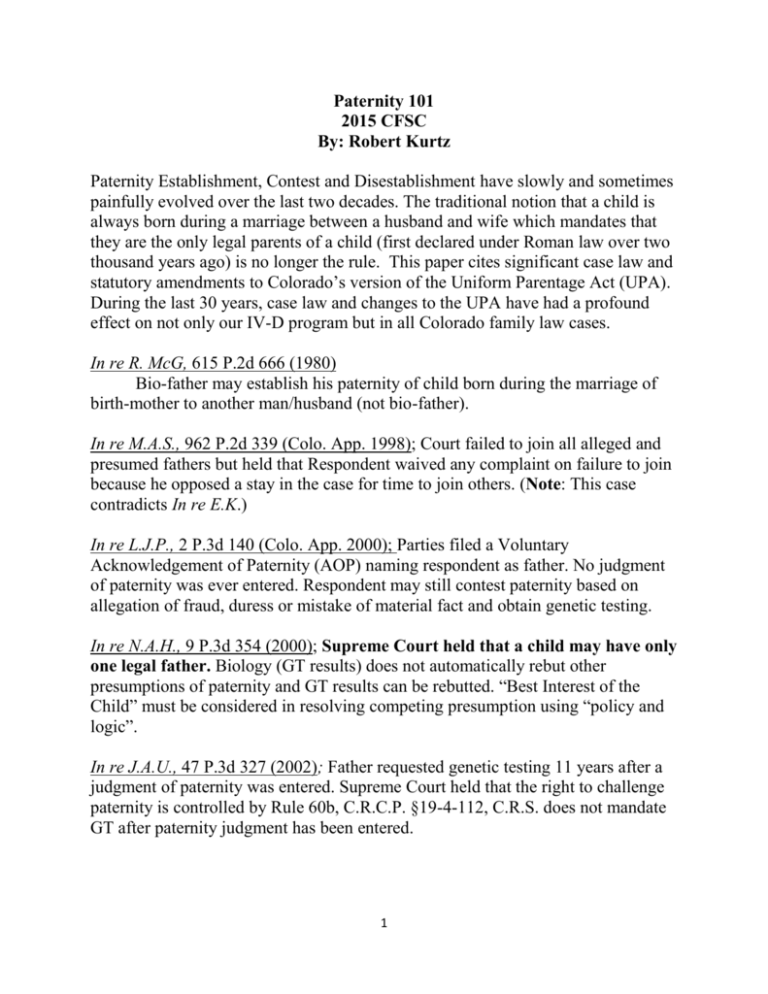
Paternity 101 2015 CFSC By: Robert Kurtz Paternity Establishment, Contest and Disestablishment have slowly and sometimes painfully evolved over the last two decades. The traditional notion that a child is always born during a marriage between a husband and wife which mandates that they are the only legal parents of a child (first declared under Roman law over two thousand years ago) is no longer the rule. This paper cites significant case law and statutory amendments to Colorado’s version of the Uniform Parentage Act (UPA). During the last 30 years, case law and changes to the UPA have had a profound effect on not only our IV-D program but in all Colorado family law cases. In re R. McG, 615 P.2d 666 (1980) Bio-father may establish his paternity of child born during the marriage of birth-mother to another man/husband (not bio-father). In re M.A.S., 962 P.2d 339 (Colo. App. 1998); Court failed to join all alleged and presumed fathers but held that Respondent waived any complaint on failure to join because he opposed a stay in the case for time to join others. (Note: This case contradicts In re E.K.) In re L.J.P., 2 P.3d 140 (Colo. App. 2000); Parties filed a Voluntary Acknowledgement of Paternity (AOP) naming respondent as father. No judgment of paternity was ever entered. Respondent may still contest paternity based on allegation of fraud, duress or mistake of material fact and obtain genetic testing. In re N.A.H., 9 P.3d 354 (2000); Supreme Court held that a child may have only one legal father. Biology (GT results) does not automatically rebut other presumptions of paternity and GT results can be rebutted. “Best Interest of the Child” must be considered in resolving competing presumption using “policy and logic”. In re J.A.U., 47 P.3d 327 (2002); Father requested genetic testing 11 years after a judgment of paternity was entered. Supreme Court held that the right to challenge paternity is controlled by Rule 60b, C.R.C.P. §19-4-112, C.R.S. does not mandate GT after paternity judgment has been entered. 1 In re Marriage of Ohr, 97 P.3d 354 (Colo. App. 2004); Child born during the marriage of husband and bio-mother/wife who then divorced. Bio-father intervened to establish his paternity based on GT results. Conflicting presumptions. Court held that child may have only one legal father. August 15, 2008 - Disestablishment of Paternity: Colorado’s first disestablishment statute is found at §19-4-10-107, C.R.S.. This law provides relief to a father seeking to determine the nonexistence of a father and child relationship of a child whose parentage is established (?) based on a marriage to the birth mother. However, the action to disestablish must be brought “…within a reasonable time after obtaining knowledge of relevant facts but in no event later than five years after the child's birth.” The “new” Disestablishment Law: In 2008, the General Assembly dealt with a bill championed by “fathers” (in error) who were also “obligors” on a child support order. These constituents argued that the then existing disestablishment law was insufficient to protect the rights of husbands when a child born during the marriage was the age of five or older at the time of a divorce. §19-4-107, C.R.S. provides the requested relief, if, the movant produces genetic testing results excluding him as the biological father of the child. However, the statute requires that the best interest of the child to control. It is reported that some courts are not requiring the movant to file genetic testing results with the motion but will enter an order for genetic testing thereafter. §19-4-105(2)(c) C.R.S. was amended at the same time to match this new statute. August 15, 2011- Genetic Testing: The Evidence statute at §13-125-126(1)(a)(II), C.R.S. was amended to deny the right to genetic testing when paternity had already been determined pursuant to the laws of another statute. This brought Colorado in to compliance with federal case law dealing with “Full Faith and Credit” that must be extended by one state to sister states regarding the establishment of paternity. In re S.N.V.284 P.3d 147 (Colo. App. 2011); Wife (not birth mother) brought action to establish her legal maternity of child born of the marriage. The UPA also applies to establishment of maternity”. Wife had two presumptions; child born during marriage and living with child and “holding him out” as her child. In re E.K.,2013 COA 99 (Colo. App. 2013); Court failed to join an alleged father before establishing paternity. If court fail’s to follow §19-4-110, C.R.S. it lacks 2 subject matter jurisdiction to establish paternity and any order entered is null and void. In re J.G.C.,318 P.3d 576 (Colo. App. 2013); Citing In re E.K., the court held that §19-4-110, C.R.S. controls in any case where paternity is being established, including D & N cases. The trial court’s dismissal of a presumed father before entering a judgment establishing paternity is null and void since court lacked subject matter jurisdiction. In re A.R.L., 318 P.3d 581 (Colo. App. 2013); Child born during same-sex relationship of birth mother and female partner. Birth father is not seeking paternity and relinquished any parental rights. A Child can have two legal mothers (remember the N.A.H and Ohr cases?). Extensive opinion on why the ruling does not mean that a child can have three legal parents. Case decided before effective date of Colorado’s Civil Union Act. 3 What is Next in our IV-D Program? Questions to Ponder If a child can have two legal mothers, can a child also have two legal fathers? All at the same time? Are same-sex marriages now legal in Colorado? If same-sex marriage is legal, will that be the death of civil unions in Colorado? 4

